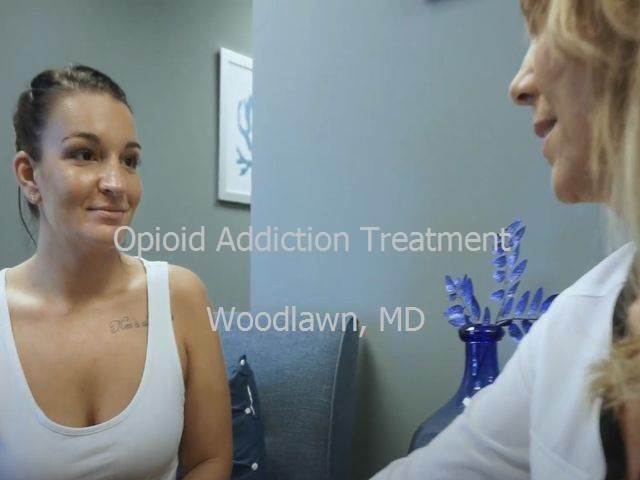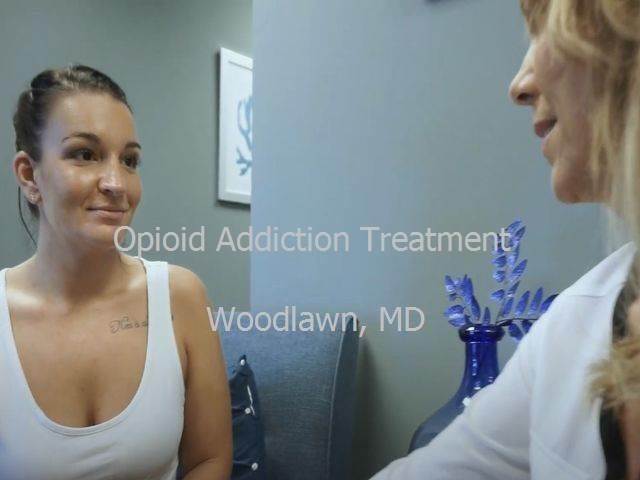Opioid use disorder is a health problem that impacts many individuals in the United States nowadays. Tens of countless people die from opioid overdose every year, and a lot more are fighting with opioid addiction. Regrettably, instead of going to the medical facility to get treatment for substance abuse carries a bad stigma, individuals attempt to fight the addiction by themselves. This frequently results in failure and relapse.
The issue of opioid use disorder in Woodlawn, Maryland

Even though, nowadays, effective treatments for opioid misuse are ending up being more available, a lot of individuals still experience this issue. They often blame themselves and their absence of self-discipline for the inability to eliminate drug addiction. In reality, this condition is not a form of bad habits or a sign of moral failure. It is a chronic medical condition that involves considerable modifications in certain parts of the brain, a physical dependence that is extremely hard to combat without expert support. Only just recently, medical professionals came close to understanding the mechanism of opioid addiction and establishing much better opioid treatment programs.
The Woodlawn, Maryland, opioid addiction treatment center offers several ways of treating substance use disorder. Keep reading to discover the nature of opioid addiction and which types of treatment give the clients a higher possibility of successful recovery.
Opioid addiction treatment rehab services
National institutes for healthcare developed different techniques of helping clients with opioid dependence. Some of them involve taking addiction medicine to manage opioid cravings. In some cases, treatment retention is suggested. It is necessary to honestly discuss your situation with health care providers to select the most efficient treatment plan.
Substance abuse treatment include a number of types:
- Treatment retention. Some people wish to escape the environment that encourages opioid misuse. They can not combat drug abuse when they are surrounded by triggers and their family members or pals have easy access to opioids. The drawback of this technique is the need to take a break from work. The favorable aspect of this program is fulfilling individuals with the exact same battle and getting their support.
- Outpatient opioid addiction treatment. Clients can continue to work and live as they did while receiving health and human services. They go to healthcare facility for systematic reviews, therapy and medications. This is a less extreme modification of lifestyle compared to residing in the treatment facilities. Such clients do not run the risk of losing their tasks but require to be accountable about remaining on track.
- Behavioral therapy. This type of treatment includes educating clients on how to make favorable changes in their habits gotten in touch with opioid use disorders. They get access to the whole series of mental health services such as cognitive behavioral therapy, private counseling, contingency management, family therapy, support groups, and so on.
- Medication assisted treatment (MAT): medicines plus therapy. Whether it is a residential program or an outpatient health care service, any treatment plan can consist of taking medications. This kind of treatment of opioid misuse has shown to be really effective. Sadly, it is frequently misconstrued and treated with suspicion. Medications that are utilized to treat opioid addiction come from the group of opioids themselves, so there is a myth that by taking them you merely replace one addiction with another. This is not real for 2 factors. Initially, the medications do not produce the euphoric effects unlike other opioid drugs. And 2nd, the data show that applying medical assisted therapy helps to significantly minimize the variety of deaths from overdose
- The drawback of this kind of treatment is that it is not commonly offered. Before the professionals can recommend these medications, they require to go through specific training. And after they complete the course, they can only recommend this treatment to a minimal variety of clients. Therefore, centers that offer MAT often have a long waiting list. The benefit of this kind of therapy is that thanks to the medications, the clients do not experience extreme withdrawal symptoms. The yearnings are not so strong too, so the majority of people stay in treatment and are less most likely to relapse.
Only an expert clinician informed on substance use disorder can select the very best treatment. The doctor requires to understand and take into consideration all the aspects that led a person to drug abuse and mental health problems. Contact the opioid addiction treatment center in Woodlawn, Maryland, to get qualified assistance.
Mechanism of opioid addiction
Opioid drugs hack the reward system of an individual’s brain and make the individual feel great if they take opioids. Normally, fulfilling such needs as eating or reproduction lead to the release of dopamine. This hormonal agent is accountable for the sensation of pleasure or complete satisfaction. It rewards people for doing things that are necessary for the survival of mankind.
When opioids reach the brain, they connect themselves to specific receptors, which sets off the reward system and produces the sensation of high. People want to experience that feeling once again. More importantly, their brain indicates them that taking opioids is the most vital thing for their survival. That is how the addiction settles in.
There are two outcomes of this modification in the brain:
- The very first one is the advancement of drug tolerance. People require more drugs to reach a state of ecstasy. Opioid use disorder regularly begins with prescription pain relievers. Often clients increase the dosage of prescription opioids to get high, and this causes opioid abuse. Some people even switch to stronger drugs like heroin.
- The 2nd result is opioid dependence. People continue substance abuse to prevent withdrawal symptoms. Due to breakdown of the reward system, without the drugs people feel uneasyness and have a terrible mood.
Other symptoms of opiate withdrawal include:
- Body pains;
- Lack of sleep;
- Nausea;
- Diarrhoea;
- Goosebumps, and so on.
Knowledge about the nature of substance use disorders can assist doctors educate their patients on what withdrawal symptoms to expect and how to deal with the yearnings. Depending upon the patient, medical professionals pick the most effective treatments that may include medicine prescription and behavioral therapies. It might not be possible to completely remove the opioid addiction, however mental health services can considerably decrease the opioid misuse and the number of heroin overdose deaths.
Opioid addiction must be dealt with the way one would treat a chronic illness. People experiencing drug addiction are motivated to join the Woodlawn, Maryland, rehab programs and improve their health and general quality of life. When you quit the drugs, return for maintenance treatment.
Who can get treatment for opioid abuse in Woodlawn, MD?

Individuals typically feel ashamed to go to the medical facility for opioid abuse treatment. There are 2 main factors for this: they are either afraid to have a bad image in the neighborhood or have actually currently given up on themselves. However these issues should not prevent patients from battling substance use disorders. Anybody is totally free to reach rehab centers and see what help they can get.
Two main categories of opioid use disorders are treated with Woodlawn, Maryland, rehab programs:
- Prescription drug abuse. Opioids are typically prescribed in the form of pain relievers for persistent or severe pain. It is possible to establish addiction to these medications. As a result, some patients begin to misuse opioids and take bigger doses of them. National institutes such as the Center for disease control developed suggestions on how to assist these patients gradually lessen the drug use.
- Heroin addiction. This condition routinely comes from the previous one. However some people turn to this drug for recreational functions. Combating heroin addiction is extremely hard, and patients should use all the treatment resources they can access. Even then, it frequently takes numerous attempts to beat the disorder.
The most effective treatments normally consist of both mental health services and medications.
Frequently Asked Questions – FAQ
Is opioid addiction a mental illness?
Opioid use disorder is a chronic brain condition. At first, people might rely on drugs because of personal problems. That is why substance abuse and mental health are typically dealt with simultaneously. Most patients take advantage of counseling, behavioral therapies and support groups. However it is very important to bear in mind that opioids make substantial changes to the brain, making it really hard to combat the addiction without medications.
What medications are utilized to treat opioid use disorder in Woodlawn, Maryland?
National institutes approved three medications for treatment of opioid drug abuse: methadone, buprenorphine and naltrexone. They have various names and results on the brain. The very first 2 medications change the opiates and smoothen the withdrawal symptoms without making the patients high. Naltrexone obstructs the mu-opioid receptor, working as an opioid antagonist.
How do I get medication-assisted treatment in Woodlawn, Maryland?
Only a qualified clinician can prescribe you medications for opioid use disorder. Check out the workplace of a health care supplier that completed the essential training and obtain a program of medication-assisted therapy.

